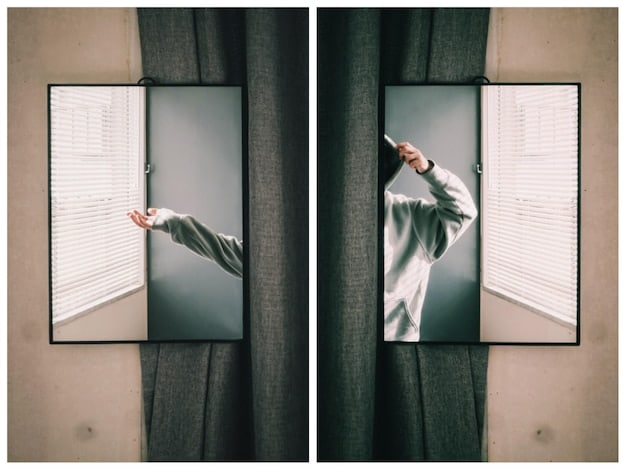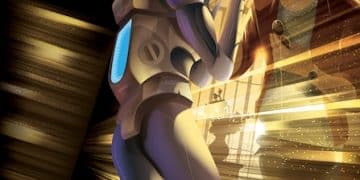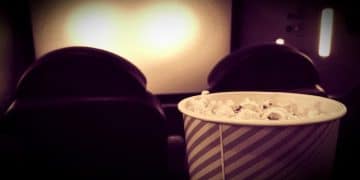The Director’s Cut Dilemma: Are Extended Versions Actually Better?

The director’s cut dilemma revolves around whether extended versions of films enhance or detract from the original theatrical release, sparking debate among cinephiles regarding pacing, narrative integrity, and the director’s true vision.
The director’s cut dilemma: Are these 4 extended versions actually better? This question has plagued film enthusiasts for decades. Do these extended versions truly enhance the viewing experience, or are they simply longer for the sake of being longer?
Understanding the Director’s Cut
Before diving into specific examples, it’s crucial to grasp what exactly a director’s cut entails. It’s not merely about adding scenes; it’s about the director’s vision fully realized, often after studio interference has been minimized or eliminated.
Theatrical releases are frequently subject to studio pressures, marketing demands, and time constraints. A director’s cut, on the other hand, offers the director a chance to present the film as it was originally intended.
The Director’s Vision vs. Studio Interference
One of the main reasons for a director’s cut is to restore the director’s artistic vision. Studio interference can lead to compromises that alter the film’s tone, pacing, or even its ending.
Director’s cuts often include scenes that were deemed too controversial, too slow, or simply not marketable enough for the theatrical release. These additions can provide deeper character development, richer world-building, and a more nuanced narrative.
- Pacing and Rhythm: Director’s cuts often restore the film’s intended rhythm, allowing scenes to breathe and develop naturally.
- Character Depth: Extended scenes can provide more insight into the motivations and backstories of the characters.
- Narrative Clarity: Certain plot points that were confusing or underdeveloped in the theatrical release may be clarified in the director’s cut.
Ultimately, the director’s cut is a testament to the director’s creative control, offering viewers a glimpse into the film’s true potential. However, not all additions are created equal, and some may argue that studio-mandated cuts sometimes serve the story better.

“Blade Runner: The Final Cut” (1982)
Ridley Scott’s “Blade Runner” is perhaps the most famous example of a director’s cut debate. The original theatrical release was heavily criticized for its studio-imposed happy ending and Harrison Ford’s voiceover narration.
Scott has since released several versions of the film, culminating in “Blade Runner: The Final Cut” (2007), which is widely considered the definitive version.
Changes in “The Final Cut”
“The Final Cut” removes the studio-mandated happy ending, replacing it with a more ambiguous and thought-provoking conclusion. The voiceover narration is also gone, allowing the visuals and performances to speak for themselves.
The inclusion of a unicorn dream sequence strengthens the suggestion that Deckard himself may be a replicant, adding another layer of complexity to the film’s themes of humanity and artificial intelligence.
- Ambiguous Ending: The removal of the happy ending leaves the audience pondering Deckard’s fate.
- No Voiceover Narration: The absence of narration enhances the film’s visual storytelling.
- Unicorn Dream Sequence: This scene raises questions about Deckard’s identity and memories.
Most critics and fans agree that “The Final Cut” is a vast improvement over the theatrical release, offering a more immersive and intellectually stimulating experience. The removal of studio interference allows Scott’s vision to shine through, making it a true masterpiece of science fiction.
“Kingdom of Heaven: Director’s Cut” (2005)
Ridley Scott again finds himself the subject of director’s cut discussions with “Kingdom of Heaven.” The theatrical release, a historical epic about the Crusades, was met with mixed reviews and accusations of historical inaccuracies.
The director’s cut, however, restores nearly an hour of footage, providing a more nuanced portrayal of the characters and events.
Restoring Historical Context
The director’s cut delves deeper into the political and religious complexities of the Crusades, offering a more balanced perspective on both sides of the conflict.
Key characters, such as Eva Green’s Sibylla and Liam Neeson’s Godfrey of Ibelin, are given more depth and motivation, making their actions more understandable and sympathetic.
- Expanded Backstories: The director’s cut provides more context for the characters’ decisions and motivations.
- Political Intrigue: The film explores the power struggles and alliances that shaped the Crusades.
- Religious Perspectives: The director’s cut presents a more nuanced view of the religious beliefs and practices of both Christians and Muslims.
Many viewers find the director’s cut of “Kingdom of Heaven” to be a significant improvement over the theatrical release, transforming it from a generic action film into a thoughtful and engaging historical drama. The added context and character development make the story more compelling and thought-provoking.
“Daredevil: Director’s Cut” (2003)
Mark Steven Johnson’s “Daredevil” received a lukewarm reception upon its theatrical release, criticized for its inconsistent tone and muddled plot. However, the director’s cut offers a more mature and cohesive version of the story.
This extended version adds approximately 30 minutes of footage, delving deeper into the character of Matt Murdock and his vigilante activities.
Darker Tone and Enhanced Violence
The director’s cut embraces a darker and grittier tone, closer to the source material. The violence is more graphic and realistic, reflecting the brutality of Daredevil’s world.
Additional scenes explore Matt Murdock’s Catholic faith and his internal struggles with justice and morality, adding layers of complexity to his character.
- Increased Violence: The director’s cut features more graphic violence, reflecting the dark nature of the story.
- Religious Themes: The film delves into Matt Murdock’s Catholic faith and its influence on his actions.
- Character Development: Added scenes provide more insight into Matt Murdock’s motivations and inner conflicts.
While the director’s cut of “Daredevil” doesn’t completely redeem the film, it does offer a more satisfying and coherent viewing experience. The darker tone and enhanced violence align better with the comic book source material, making it a more enjoyable film for fans of the character.
“Watchmen: Director’s Cut” and “Ultimate Cut” (2009)
Zack Snyder’s “Watchmen” is another example of a film with multiple extended versions. The director’s cut adds approximately 24 minutes of footage, while the “Ultimate Cut” integrates the animated “Tales of the Black Freighter” into the main narrative.
These extended versions aim to provide a more faithful adaptation of Alan Moore’s iconic graphic novel. Moore himself, however, famously disowned all film adaptations of his work.
Expanding the World of “Watchmen”
The director’s cut adds more character development and explores the complex relationships between the Watchmen. It also delves deeper into the alternative history of the film’s world.
The “Ultimate Cut” integrates “Tales of the Black Freighter,” a comic within the comic, which serves as a commentary on the main narrative and its themes of morality and sacrifice.
- Character Development: The director’s cut expands on the backstories and motivations of the Watchmen.
- Alternative History: The film explores the political and social events that shaped the Watchmen’s world.
- “Tales of the Black Freighter”: This animated segment adds another layer of depth to the film’s themes.
Some viewers find the extended versions of “Watchmen” to be more rewarding and faithful to the source material, while others argue that the additions disrupt the film’s pacing and coherence. Ultimately, the choice between the theatrical release and the extended versions is a matter of personal preference.
| Key Point | Brief Description |
|---|---|
| 🎬 Director’s Cut | Director’s vision, often longer and more complete. |
| ✂️ Studio Interference | Studio cuts can affect pacing, clarity, and tone. |
| ⚖️ Better or Worse? | Depends on the film and viewer preference. |
| 🤔 Personal Taste | Some prefer theatrical for pacing; others seek director’s full vision. |
Frequently Asked Questions
▼
A director’s cut is a version of a film that reflects the director’s original vision, free from studio interference. It often includes scenes or elements that were removed from the theatrical release.
▼
Not necessarily. While they often offer a more complete artistic vision, some viewers may prefer the tighter pacing and streamlined narrative of the theatrical release. It depends on individual preferences.
▼
Scenes are often cut due to studio concerns about length, pacing, marketability, or content. Sometimes, scenes are deemed too controversial or confusing for a general audience.
▼
Director’s cuts are often released on DVD, Blu-ray, or streaming platforms. They are typically labeled as “Director’s Cut,” “Extended Edition,” or “Ultimate Edition.” Check the product description before purchasing.
▼
Generally, yes. The director’s cut represents their unfiltered artistic vision. However, in some cases, directors may acknowledge the validity of studio feedback and appreciate the compromises made for the theatrical release.
Conclusion
Ultimately, the director’s cut dilemma comes down to personal preference. While extended versions offer a glimpse into the director’s complete vision, they may not always be superior to the theatrical release. Whether or not these versions are “better” depends on what you value most in a film: pacing, narrative integrity, or artistic expression. Each film presents a unique case, and the decision rests with the viewer.


![Decoding the Ending: A Deep Dive into the Controversial Finale of [Movie Title] Decoding the Ending: A Deep Dive into the Controversial Finale of [Movie Title] - Cover Image](https://seuappe.com.br/wp-content/uploads/2025/05/Seuappe_747_1748452049_51907d86_cover-360x180.jpg)


